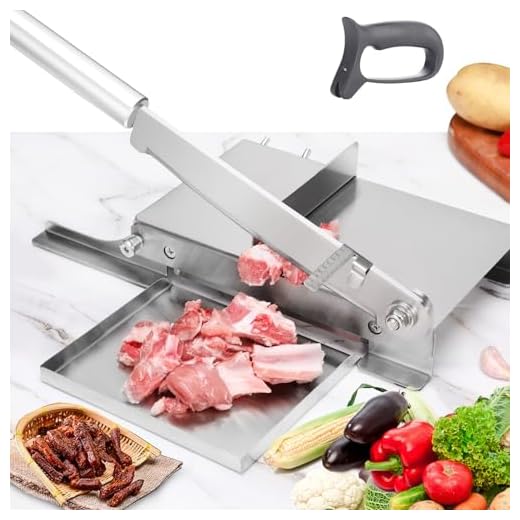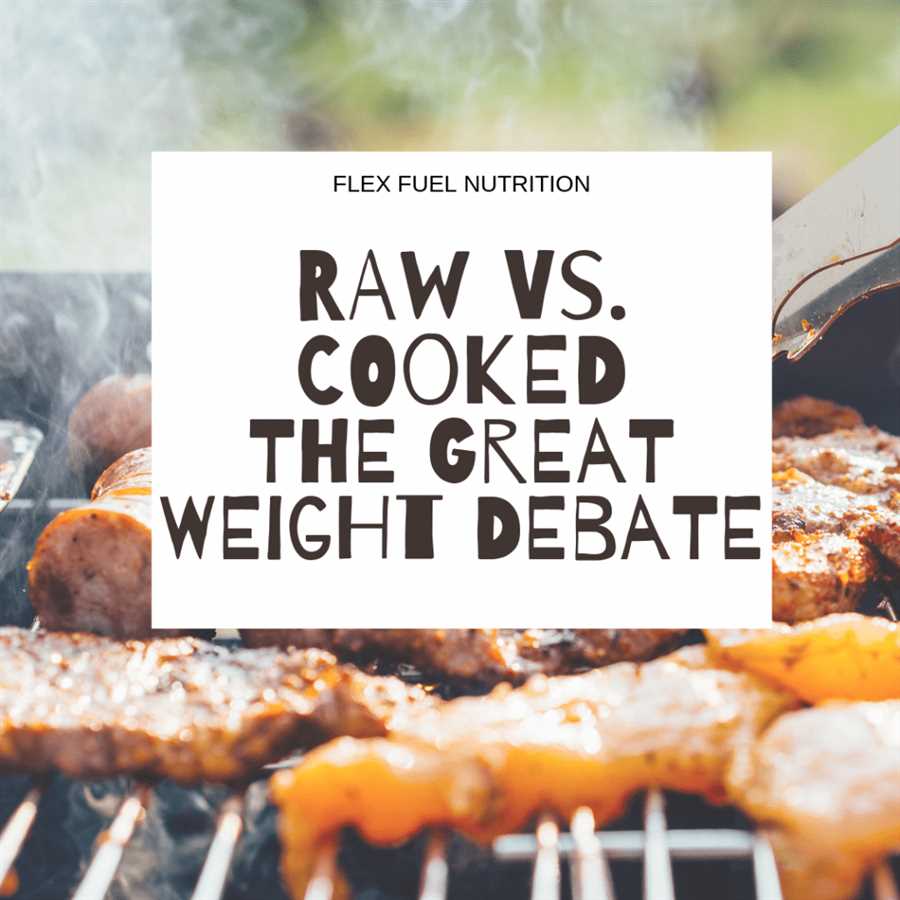





When it comes to cooking and tracking your food intake, it’s important to know whether you should measure meat raw or cooked. This question often arises for those who are conscious of their dietary habits, whether it be for weight loss, muscle gain, or simply maintaining a healthy lifestyle.
When measuring meat, it is generally recommended to measure it raw. This is because cooking methods and durations can vary, which can affect the final weight of the meat. By measuring raw meat, you can ensure a more accurate representation of its nutritional value and calorie content.
Measuring meat cooked may lead to an overestimation or underestimation of its nutritional value. Cooking meat can cause it to lose moisture and shrink in size, which may result in a smaller weight than what you started with. On the other hand, certain cooking methods, such as frying, can cause the meat to absorb oils or fats, increasing its weight. These factors can make it difficult to accurately track your food intake if you measure meat after it’s been cooked.
“By measuring raw meat, you can ensure a more accurate representation of its nutritional value and calorie content.”
Furthermore, it’s important to note that cooking methods can also affect the macronutrient content of meat. For example, cooking meat at high temperatures can cause the fat content to melt away, resulting in a lower fat content. On the other hand, certain cooking methods, such as grilling or frying, may cause the meat to retain some of its fat, increasing its overall fat content.
In summary, if you’re looking to accurately track your food intake, it is recommended to measure meat raw rather than cooked. This will provide a more accurate representation of its nutritional value, calorie content, and macronutrient composition. By measuring meat raw, you can ensure that you’re making informed decisions about your dietary habits and achieving your desired health goals.
Raw meat vs cooked meat
When it comes to measuring meat, there is often confusion about whether to measure it raw or cooked. The decision of whether to measure the meat raw or cooked will depend on the specific recipe and your personal preference. However, it’s important to consider the potential differences in weight and nutritional content when making this decision.
Measuring raw meat
Measuring meat in its raw state is a common method used in many recipes. This is because it allows for more accuracy in portioning and ensures that the cooking time and temperature are appropriate for the desired outcome. Additionally, measuring raw meat can help you determine the nutritional content more accurately, as the cooking process can affect the nutritional values.
When measuring raw meat, it’s important to consider any bones or excess fat that may be present. If you’re using bone-in meat, you may want to account for the weight of the bones by subtracting their weight from the total weight. Similarly, if there’s excess fat on the meat, you may want to trim it off before measuring, as it can add unnecessary weight and affect the overall composition of the dish.
Measuring cooked meat
On the other hand, measuring meat after it’s cooked can be a more practical approach for some recipes. This is especially true when the recipe calls for a specific weight of cooked meat, or when you want to ensure that the meat is fully cooked and tender.
When measuring cooked meat, keep in mind that the weight will typically be less than when it was raw. This is due to the loss of moisture and fat during the cooking process. Therefore, it’s essential to adjust the portion size accordingly to achieve the desired result.
Final thoughts
Whether you choose to measure meat raw or cooked, it’s important to follow the recipe instructions carefully and consider the purpose of the measurement. If you’re unsure, it’s always a good idea to consult the recipe or seek guidance from a professional chef or trusted source to ensure the best results.
Ultimately, the decision of measuring raw or cooked meat comes down to personal preference and the requirements of the specific recipe you’re cooking. Experimenting with both methods can help you determine which approach works best for you and the dishes you enjoy preparing.
Understanding the difference

When it comes to measuring meat, whether it’s raw or cooked can make a significant difference. Raw meat typically weighs more than cooked meat due to a loss of moisture and fat during the cooking process. Understanding this difference is crucial for accurate measurements in cooking and nutrition.
Measuring meat raw is the most common and recommended method. This is because raw meat provides a more accurate representation of its true weight and nutritional content. When meat is cooked, it tends to lose moisture, which can result in a significant reduction in weight.
However, there are some cases where measuring meat cooked may be necessary. This is often seen in recipes or nutrition plans that provide specific measurements for cooked meat. In such instances, it’s important to note that the weight of cooked meat will be less than its raw counterpart.
To convert measurements between raw and cooked meat, it’s essential to know the approximate weight loss during cooking. As a general guideline, it’s estimated that meat loses about 25-30% of its weight during the cooking process. Keep in mind that this can vary depending on the cooking method and the type of meat being prepared.
It’s important to be mindful of the difference between raw and cooked meat when following recipes or nutrition plans. Make sure to follow the instructions carefully and adjust your measurements accordingly to ensure the best results in your cooking and to accurately track your nutritional intake.
Advantages of measuring meat raw
Measuring meat in its raw form can provide several advantages:
-
Accurate portion control: Measuring meat before it is cooked allows for precise portion control. This is particularly important for individuals following a specific diet plan or trying to manage their calorie intake.
Trending Nowawagas Heavy Duty Meat Tenderizer MachineQuick and easy tool for tenderizing meatThis manual meat tenderizer efficiently flattens and tenderizes tough cuts of meat, ensuring better absorption of spices and enhanced flavor in cooking. Designed for ease of use and installation. -
Consistent cooking results: By measuring meat raw, you can ensure consistent cooking results. This is important in recipes where achieving a certain level of doneness is crucial.
-
Better nutrition tracking: Measuring meat raw enables you to accurately track the nutritional value of your dish. Nutritional information for meat is typically provided for the raw state, which makes it easier to calculate the macros and calories in your meal.
-
Cost-effective meal planning: When using raw measurements, you can plan your meals more efficiently. By knowing the exact amount of meat you need, you can reduce waste and save money by buying only what is necessary.
-
Cooking versatility: Measuring meat raw allows you to easily adapt recipes and experiment with different cooking methods. By knowing the initial weight of the raw meat, you can adjust cooking times and temperatures to achieve the desired result.
More accurate nutritional information
When it comes to measuring meat, whether raw or cooked, it’s important to have accurate information about its nutritional content. Measuring meat accurately can help you make more informed choices about your diet and ensure that you are getting the right balance of nutrients.
Measuring meat raw or cooked can yield different results. When you measure meat raw, you are getting the nutritional information for the meat as it is before cooking. This can be useful if you are tracking your macronutrient intake or if you want to know the exact calorie count of the meat you are consuming. However, it’s important to note that cooking can affect the nutritional content of the meat, such as the loss of moisture and fat, as well as changes in the protein structure.
On the other hand, measuring meat cooked can give you a more accurate representation of the final product that you will be consuming. Cooking can reduce the weight of the meat due to moisture loss, so measuring it cooked can help you better estimate your portion sizes and calorie intake. Additionally, cooking can also affect the texture and taste of the meat, making it more enjoyable to eat.
Ultimately, whether you measure meat raw or cooked depends on your specific needs and goals. If you are looking for precise nutritional information, measuring it raw may be the better option. However, if you are more concerned about portion sizes and calorie intake, measuring it cooked may be more practical.
Regardless of how you choose to measure your meat, it’s important to remember that the nutritional content of meat can vary depending on various factors, such as the cut of meat, cooking method, and marinating or seasoning. It’s always a good idea to consult reliable sources or use a professional food scale to get the most accurate and up-to-date nutritional information for your meat.
Consistent portion control
One of the key factors in maintaining a successful kitchen operation is consistent portion control. Ensuring that each portion of meat is the same size every time is important for both cost control and customer satisfaction.
Why is portion control important?
Portion control is important for several reasons:
- Cost control: By accurately measuring and controlling the amount of meat used in each dish, you can better manage your food costs. Consistent portion control helps to prevent overuse and wastage of expensive ingredients.
- Consistency in taste and presentation: When the portion sizes are consistent, the taste and presentation of the dish remain the same. This is important for ensuring that customers have a reliable dining experience and come back for more.
- Health and nutrition: Portion control plays a vital role in managing the nutritional content of each dish. By controlling the portion sizes, you can ensure that customers are getting the right amount of protein and other nutrients.
How to achieve consistent portion control?
Here are some tips to help you achieve consistent portion control:
| Tips | Description |
|---|---|
| Invest in portion control tools | Use measuring cups, spoons, scales, and portion scoops to accurately measure the amount of meat used in each dish. |
| Train your staff | Provide training to your kitchen staff on portion control techniques and the importance of consistency in portion sizes. |
| Regularly calibrate measuring tools | Ensure that your measuring tools are accurately calibrated to avoid any discrepancies in portion sizes. |
| Monitor portion sizes | Consistently monitor the portion sizes by conducting regular checks to ensure that they remain consistent over time. |
| Standardize recipes | Create standardized recipes that specify the exact amount of meat to be used in each dish. |
By implementing these practices, you can improve your kitchen’s efficiency, reduce costs, and deliver consistent and satisfying dishes to your customers.
Questions and answers
Do you measure the weight of meat before or after cooking?
You should measure the weight of raw meat before cooking it.
Should I weigh the meat before or after cooking it?
It is recommended to weigh the meat before cooking it.
Is it better to measure meat raw or cooked?
It is more accurate to measure the weight of raw meat before cooking it.
When should I weigh the meat, before or after cooking it?
You should weigh the meat before cooking it to get the correct measurement.







